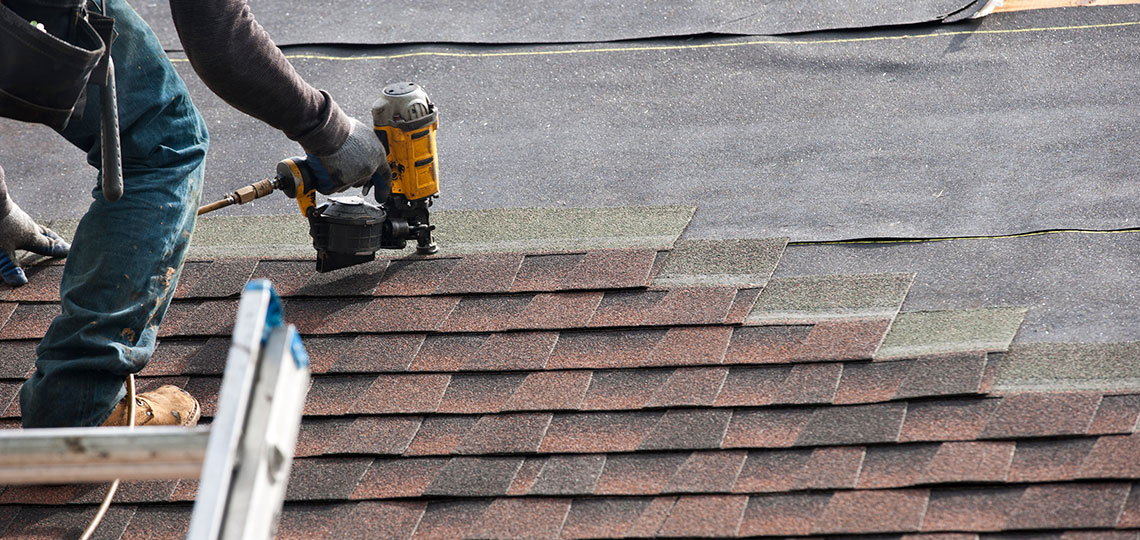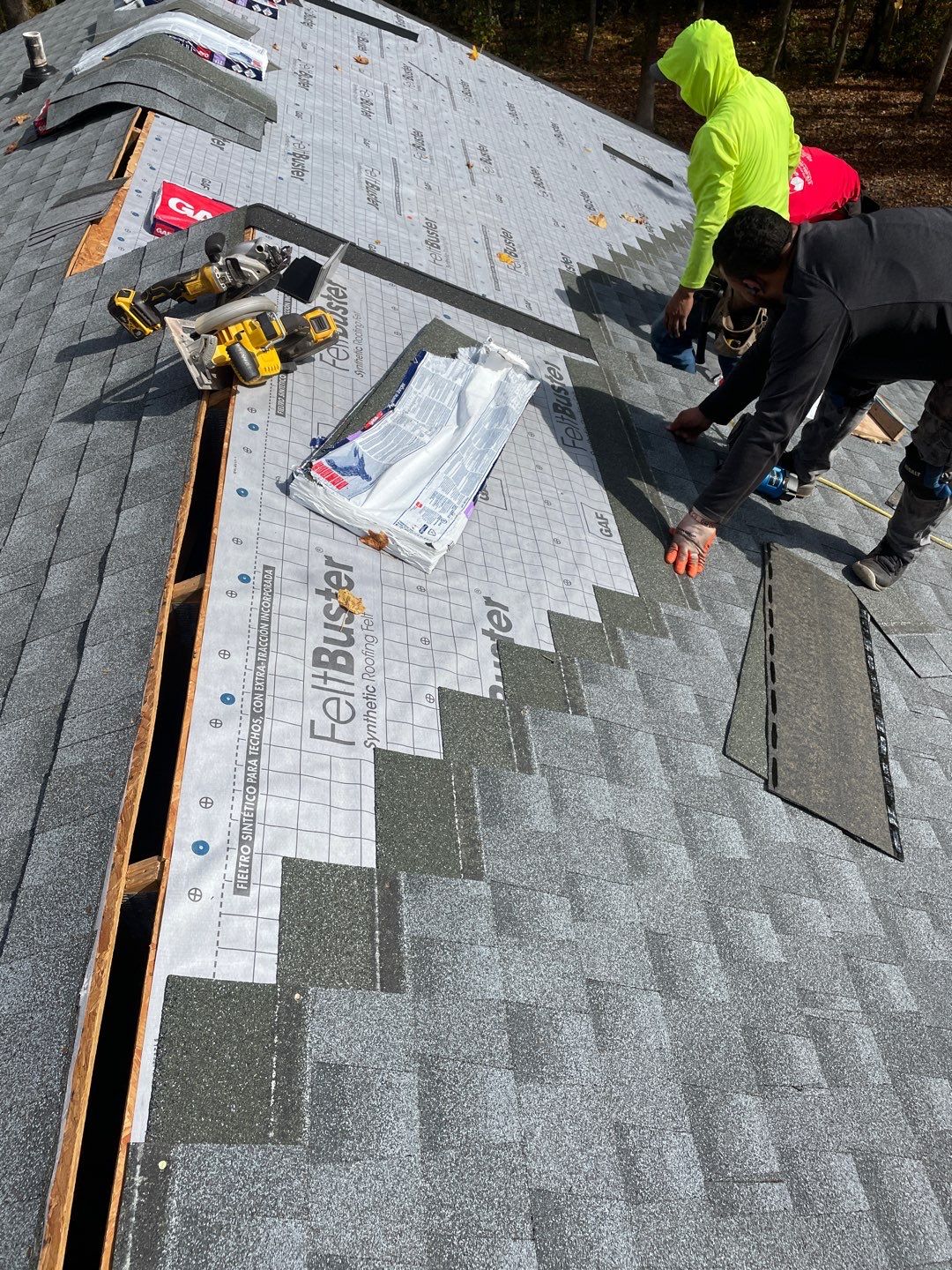Finest Practices for Ensuring Proper Roofing Ventilation
Making certain correct roofing air flow is important for the long life and efficiency of a roof. A balanced consumption and exhaust air vent proportion, generally 1:300, plays a critical role, with intake vents preferably put at the lower edge of the roofing for trendy air entry and exhaust vents at the height for cozy air leave. Routine examinations to identify blockages and keep clear air movement are vital. In addition, maintaining insulation away from vents is critical to avoid air movement limitation. Recognizing these fundamental components sets the phase for even more in-depth understandings right into installment and maintenance techniques that can considerably enhance your roof covering system's efficiency.
Understand Ventilation Basics
Effectively recognizing air flow essentials is necessary for ensuring the longevity and efficiency of roof. Reliable ventilation minimizes dampness accumulation and temperature level extremes in the attic room, both of which can bring about substantial structural damage gradually. A well-ventilated roofing helps in stopping typical problems such as mold development, timber rot, and ice dams, which can jeopardize the integrity of the roofing products and the underlying frameworks.
The key goal of ventilation is to help with the movement of air, permitting a constant exchange between the indoor and outdoor atmospheres. This equilibrium is accomplished with a combination of consumption and exhaust vents that collaborate to maintain optimal air movement. Intake vents, typically situated along the soffits or eaves, permit fresh air to get in the attic room space, while exhaust vents, usually positioned at or near the roofing system ridge, make it possible for warm, damp air to run away.
Key factors affecting the effectiveness of roof covering air flow include proper positioning, appropriate sizing, and ensuring that both consumption and exhaust vents are unblocked. Normal inspection and upkeep are vital to identify possible blockages, damages, or inefficiencies in the ventilation system, therefore guarding the roofing system's efficiency and resilience.
Kinds Of Roofing System Vents
Roof vents play a crucial role in preserving efficient attic room air flow and, by expansion, the total health and wellness of the roofing system. Different types of roof vents are offered, each with special benefits tailored to details roof covering needs. Ridge vents, as an example, are mounted along the roof's top, enabling cozy, humid air to run away from the attic room. They offer constant ventilation and mix perfectly with the roofline, making them both effective and visually pleasing.

Soffit vents are installed under the eaves and operate in tandem with roof vents to ensure a balanced intake and exhaust system. By enabling cooler air to get in from below, soffit vents help with the expulsion of hot air via upper vents. Gable vents, located on the outside wall Visit Website surfaces of the attic room, offer one more efficient remedy, particularly in homes with gable roofings.
Evaluate Your Existing Air Flow

Following, take into consideration the age and problem of your roofing materials and air flow components. Older systems may not comply with current building ordinance or might have degraded gradually, minimizing their performance. Conduct a comprehensive assessment to recognize any kind of indications of deterioration, such as corrosion, damages, or voids that might compromise the system's performance.
In addition, measure the attic room temperature level and moisture degrees. High temperatures and humidity can suggest poor ventilation - roofing companies. Use a hygrometer and thermostat to get accurate readings, contrasting them with outdoor problems. Relentless disparities recommend potential issues that need attending to.
Installment Best Practices
Effective installation of roofing air flow systems is paramount for making certain optimum efficiency and long life. Correct installment begins with comprehending the details ventilation demands of the building and the roof covering it covers. This involves calculating the proper proportion of consumption to tire vents, typically sticking to the 1:300 policy, which specifies one square foot of air flow for every 300 square feet of attic floor area.

Consumption vents need to be installed at the roof's reduced edge, commonly in the soffits, to allow cool air to enter. Exhaust vents, on the other hand, ought to be installed near or at the roofing system's height to assist in the leave of cozy, moist air.
Seal all vent links carefully to avoid air leakages and possible water infiltration. Usage high-quality materials and follow manufacturer guidelines to make sure durability and effectiveness. In addition, incorporating ridge vents with baffles can considerably improve air flow efficiency by stopping wind-driven rainfall and snow from getting in the attic room.
Eventually, specific installation of roofing ventilation systems mitigates possible concerns such as mold and mildew growth, ice dams, and structural damage, making sure the roof covering's integrity and the structure's overall health.
Normal Upkeep Tips
Uniformity in upkeep techniques is fundamental to making certain the lasting effectiveness of roofing ventilation systems. Regular evaluations are essential, ideally executed biannually-- in the springtime and autumn. During these assessments, guarantee that vents are devoid of debris, nests, and other obstructions that might hinder air flow. Look for any type of great post to read signs of dampness build-up or mold and mildew, as these can show incorrect ventilation or leakages (gainesville Homepage fl roofing companies).
Make use of a soft brush or a vacuum cleaner to get rid of dust and debris from consumption and exhaust vents. Be mindful not to damage the vent displays or louvers throughout the process.
Correct insulation is similarly important. Ensure that attic room insulation does not obstruct the vents, as this can badly limit air movement. Rearrange or replace it to keep a reliable obstacle. if any type of insulation has shifted or settled.
Finally, change any kind of harmed or missing components quickly. Broken vents, broken roof shingles, or tatty blinking can all contribute to poor air flow and must be resolved immediately. Routine upkeep makes sure that the roof ventilation system functions efficiently, consequently extending the life expectancy of the roof covering itself.
Final Thought
Ensuring correct roofing air flow is vital for maintaining the performance and resilience of a roof covering system. Adherence to the 1:300 consumption and exhaust vent ratio, paired with the critical positioning of vents, is essential.
A well balanced consumption and exhaust vent proportion, generally 1:300, plays an essential duty, with consumption vents preferably placed at the reduced side of the roofing system for trendy air entry and exhaust vents at the peak for cozy air exit. Intake vents, normally located along the eaves or soffits, allow fresh air to go into the attic room room, while exhaust vents, commonly positioned at or near the roofing system ridge, allow hot, humid air to get away.
Soffit vents are mounted under the eaves and job in tandem with roof vents to ensure a balanced intake and exhaust system. By enabling cooler air to enter from below, soffit vents help with the expulsion of hot air with top vents. Adherence to the 1:300 consumption and exhaust air vent proportion, paired with the strategic positioning of vents, is important.